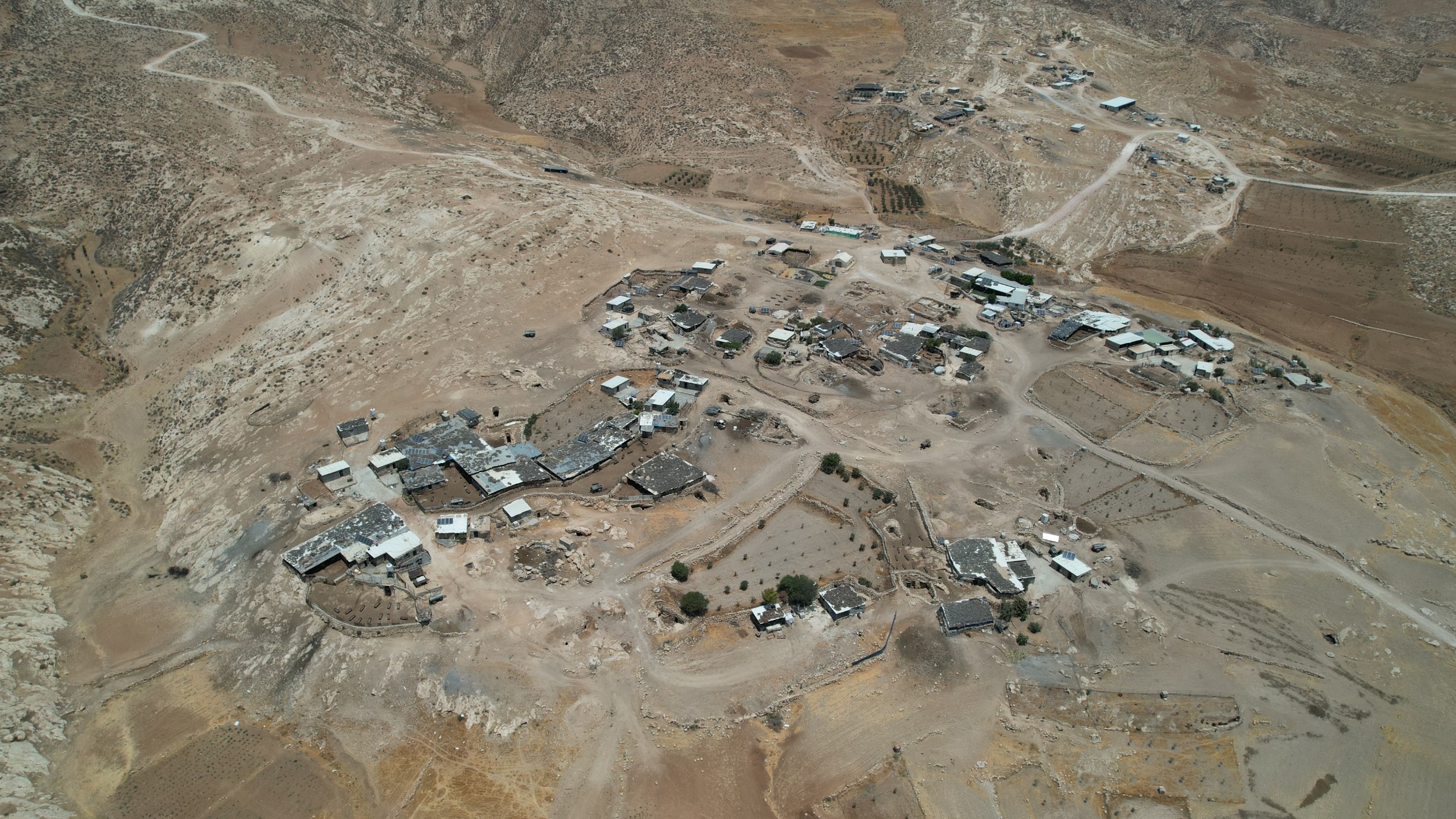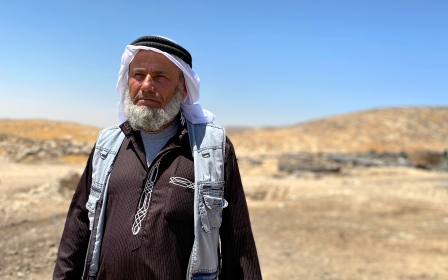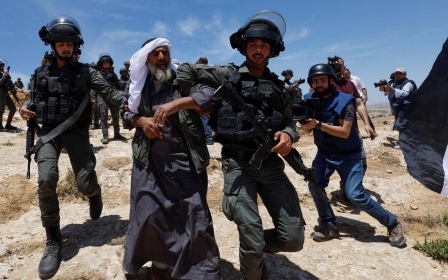Israeli Supreme Court decision on Masafer Yatta paves way for land grabs

The Israeli Supreme Court rejected an appeal on Sunday from the residents of Masafer Yatta in the southern occupied West Bank, petitioning against the demolition of two schools, clinics and structures in the area.
The residents' lawyers had filed the petition following a supreme court decision in May that ordered the expulsion of 1,200 Palestinians in Masafer Yatta so the area could be turned into an Israeli military "firing zone" - a training ground for Israeli forces.
'Israel wants to kick us out and they'll do anything to make it happen'
- Sami Huraini, activist
The decision gave the army the green light to completely raze eight villages in Masafer Yatta to the ground, including Khirbet al-Fakheet and Janba, and demolish hundreds of other structures in surrounding villages - including four schools - due to their presence in what the army has designated as "Firing Zone 918".
The residents' lawyers filed another petition seeking an interim injunction on Sunday but said that if it fails, it would affect the nearby villages of Tuba and Isfai as well.
"If the new petition is rejected, which we unfortunately feel will most likely happen, then it will threaten 50 percent of the structures in Fakheet, Janba, Tuba, and Isfai with imminent demolition," Sami Huraini, a local activist with Youth of Sumud, told Middle East Eye.
"There isn't a lot of hope that another petition will stop things. Israel wants to kick us out and they'll do anything to make it happen."
Huraini warned that while Tuba was not part of the eight villages that were slated for demolition in May's supreme court decision, it, and other villages, will continue to see more demolition orders come their way in the coming weeks and months.
"We have been saying this forever, that even the villages that weren't listed in the decision in May are going to be under threat because of the precedent that the supreme court decision laid out," Huraini said.
"All of Masafer Yatta is under threat."
Firing Zone 918
Masafer Yatta, also known as the South Hebron Hills, lies on the southern tip of the West Bank, bordering the Green Line. It is home to several herding communities that live in small hamlets across the hilly desert terrain.
Around 3,000 hectares of the land in Masafer Yatta, encompassing 12 villages, was declared a military firing zone in the 1980s, and the Israeli military then sought to remove the residents from the land. It was subsequently declared Firing Zone 918.
In 1999, the army forcibly expelled around 700 residents of Masafer Yatta from their homes after declaring that they were living "illegally" in a firing zone.
The residents petitioned the Israeli Supreme Court soon after the expulsion, which initiated an interim injunction that allowed them to return to their homes, but banned any new construction or development in the area. As a result, many were forced to build without permits to account for the growing population.
Throughout the court proceedings, the Israeli army continued to enforce home demolitions in Masafer Yatta and also conduct live military training in the firing zone, often forcing residents to leave their homes for days at a time.
The residents' legal battle in the Israeli courts had spanned over 20 years when their petitions were finally rejected by the supreme court in May. Rights groups have decried the supreme court’s decision, saying it would amount to forcible transfer, a war crime under international law.
Rights groups say that Israel uses firing zones as a tactic to grab land in the occupied Palestinian territory and use it for Israeli settlements.
"The State of Israel cites formal arguments such as ‘living in a firing zone’ and ‘violating planning and building laws’ to justify its policy in Masafer Yatta. These are false claims, meant to conceal Israel's aspirations to take over the land for its own purposes and use it to benefit the Jewish population only,” Israeli human rights group B'Tselem said.
Classified documents revealed by +972 magazine in July showed minutes from a 1979 meeting by the World Zionist Organization's settlement division, during which Ariel Sharon, the agricultural minister at the time, explained that firing zones "were created for one purpose: land reserves for settlements”.
It is estimated that as of 2015, approximately 17 percent of the entire West Bank has been designated as firing zones, primarily in the Jordan Valley, the northern Dead Sea area, and the South Hebron Hills.
Middle East Eye propose une couverture et une analyse indépendantes et incomparables du Moyen-Orient, de l’Afrique du Nord et d’autres régions du monde. Pour en savoir plus sur la reprise de ce contenu et les frais qui s’appliquent, veuillez remplir ce formulaire [en anglais]. Pour en savoir plus sur MEE, cliquez ici [en anglais].





